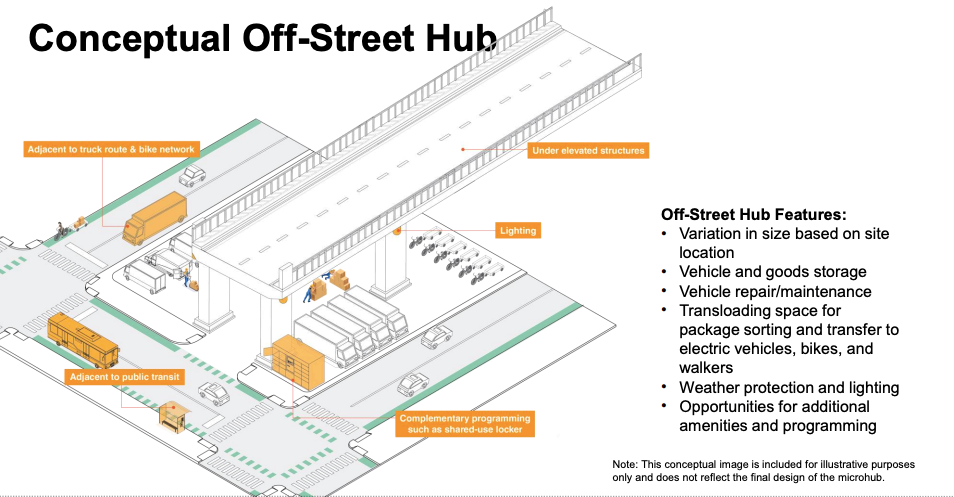The city Department of Transportation on Tuesday said it will establish on-street microhub zones as part of a pilot program to address the negative environmental and public safety effects of truck deliveries.
The first five pilot locations will be in Greenpoint, Clinton Hill and the Upper West Side, according to a press release. Each microhub zone will be designated to one delivery company for exclusive use via an annual permit.
Operators will be responsible for sweeping microhub zones at least once per week, removing snow and ice, and maintaining the cleanliness of designated street signage. Company names will be prominently displayed on each commercial vehicle, low-emission or electric commercial vehicle, bicycle or handcart using a microhub zone.
The three-year pilot program will provide safe, dedicated spaces for truck operators to transfer deliveries onto safer and more sustainable modes of transportation for the last leg of delivery, including e-cargo bikes, handcarts and smaller electric sprinter vans.
“New Yorkers are receiving more deliveries than ever before, and microhub zones will make them greener and safer by reducing the number of big trucks navigating local streets,” said DOT Commissioner Ydanis Rodriguez. “Big delivery trucks not only present safety risks on busy city streets, but too often they block the flow of traffic on our roads and pedestrians on our sidewalks.
The two Brooklyn locations will be underneath the Brooklyn-Queens Expressway. In Clinton Hill, the microhub will be placed under the BQE on Park Avenue between Washington Avenue and Hall Street. In Greenpoint, the hub will under the BQE on Meeker Avenue between Sutton Street and Kingsland Avenue.

On-street microhub zones will be about 80-100 feet in length and located in the curb lane. They will include signage and other markings designating it as a microhub. Space will be available for package sorting and transfer of packages to electric vehicles, cargo bikes and handcarts. The DOT will also install upgraded safety barriers and cargo bike corrals where needed.
Off-street microhub zones will be located on city-owned properties and may include space for vehicles, goods storage, vehicle repairs, maintenance, and/or charging, transloading space for package sorting and vehicle transfer, weather protection and lighting. The off-street delivery hubs will vary in size based on site location and they will be managed by a license agreement between New York City and the respective companies in the pilot.
The DOT will collect data from each microhub at regular intervals to determine the pilot’s success. Relevant data points include, but are not limited to, sustainability, the operator’s average daily and weekly utilization rate of the microhub, and the total number of trips from the microhub to the final destination of delivery categorized by type of sustainable mode of transportation.
Additional details on the pilot program are available in DOT’s Microhubs Pilot report.




